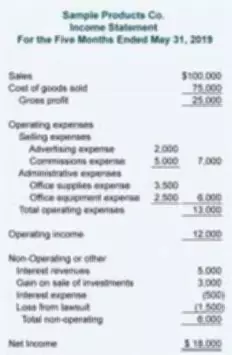Content

Since FTE considers the hours worked by part-timers, it enhances the efficiency of your capacity planning. That means you need 7 full-time workers and 1 part-time worker to complete the job. The Full-Time Equivalent is the number of hours a business considers a full-time employee to work. While each business may require a different number of hours, legally most employees are full-time at 30 hours a week. FTE value helps in indicating the number of full-time employees that a company shall employ in a year or the number and type of employees needed to complete a project. Once you have this information, you can determine how many part-time employees are equal to a full-time employee in terms of FTE.
- To calculate FTEs and see if you qualify for tax credit, you can choose one of the said methods (we’ve provided calculators for each).
- Now add the total number of hours worked by full-time employees to that of part-time employees to get the total number of hours for all employees.
- Unlike headcount, FTE takes into account the total number of full-time and part-time workers working at your firm.
- You no longer have to calculate the working hours and headcount separately.
- In this article, we’ll teach you everything that you need to know about calculating this metric and why it matters.
In this way, scheduling projects based on the FTE calculation allows for greater accuracy in workforce planning and the efficient allocation of resources. The ACA’s employer mandate applies to any employer who has at least 50 full-time equivalent employees. This can be a combination of full-time and full-time equivalent employees, with each full-time employee counting as one, and full-time equivalent employees added as described above. Whether an employer is an ALE under the shared responsibility provisions will depend on the size of the organization. Those employing an average of at least 50 full-time employees including full-time equivalent employees are considered to be an ALE.
G-P. Global Made Possible.
A full-time equivalent assists in tallying work hours, salaries, employee productivity, and company’s or workplace’s productivity, as well as calculating how much time an assignment or a project will take. Knowing your number of FTEs is important for assessing business performance, and it’s required under the Affordable Healthcare Act (ACA) and for certain tax credits. The method for calculating FTE is slightly different for each of these uses. With so many employment intricacies, https://www.bookstime.com/ it’s crucial you clearly distinguish between each type of employee, especially if you’re managing a large global team. Globalization Partners’ global employment platform streamlines worker classification and ensures your company is compliant in key areas like employment contact generation and payroll. You should also leave out any employees who work outside the U.S., leased employees, and workers who hold positions like direct selling or commission-based agenting.
- The chart below displays the number of weekly hours worked with the corresponding FTE under the standard 40 work-week.
- Through this, you can identify the needs and internal capabilities of your employees more easily, as well as exercise more strategic management.
- Thus, whenever you are planning short-term projects, you should rely on an hour-based resource management model.
- Do not include 1099 contractors; they are not considered employees.
- First, it is necessary to determine the number of hours worked by part-time employees.
The underlying period can be, for example, a day, a month or even a year. Let’s take an example to understand how to calculate work hours in FTE. In our example, we calculated Janet at 1.25, Tom at 1.0, Ryan at 0.5 and Gina at .25. Use our AI-driven, automated, fully compliant global employment platform powered by our in-house worldwide HR experts.
Separate hours of part-time employees
Under the ACA, some large employers might be responsible for providing minimum essential coverage or making shared responsibility payments to the IRS. If you’re ever asked to calculate FTEs for your company, the person or organization asking you for the figure should be able to outline exactly how they expect you to arrive at your result. Generally speaking, you can arrive at your own FTE by following the steps below. The full-time equivalent is an indicator that answers many of the questions Human Resources departments need answers to. This, therefore allows them to make better decisions regarding personnel management.
What is the difference between full-time and full-time equivalent?
A full-time equivalent (FTE) is a unit of measurement used to figure out the number of full-time hours worked by all employees in a business. If your business considers 40 hours to be a full-time workweek, then an employee working 40 hours per week would have an FTE of 1.0.
First, let’s look at what full-time equivalent or FTE actually means. The full time equivalent, often abbreviated as FTE is an indicator that reflects an employee’s productive capacity. An FTE of 1.0, for example, corresponds to the hours worked in a day for a full-time employee. Consequently, the FTE for a part-time employee working 20 hours a week would be 0.5.
What Does Full Time Equivalent (FTE) Mean?
When resources log the exact number of hours they worked on a project, you can compare the booked hours vs. the actual time taken. This will help you act proactively and take corrective measures ahead of time. The full-time equivalent is ideal for Engineering and Construction projects. They have projects that last for months, and they end up hiring contractors on a large scale.

FTEs are calculated in different ways for different accounting uses or for calculating eligibility for different federal programs. A part-time worker who works half-time would be equivalent to 0.5 FTE. The remote workforce model is ideal to build a global team and can be a win-win for both your company and employees. At G-P, our industry leading Global Employment Platform™ helps companies unlock their full potential by building highly skilled global teams in days instead of months. Here we discuss the opportunities – and challenges – in achieving the kind of global growth and success we can all share.
How to calculate the required headcount?
In reference to an individual, 0.5 usually refers to the fact that the worker renders less than a full day of work or the student attends less than a full day of classes. Cassie is a deputy editor, collaborating with teams around the world while living in the beautiful hills of Kentucky. She is passionate about economic development and is on the board of two non-profit organizations seeking to revitalize her former railroad town. Prior to joining the team at Forbes Advisor, Cassie was a Content Operations Manager and Copywriting Manager at Fit Small Business.
A full-time equivalent (FTE) is a unit of measurement used to determine the amount of full-time hours worked by all employees in an organization. If a normal work week consists of 40 hours, an employee who works for 40 hours per week has an FTE of 1.0 while a part-time employee working only 20 hours per week has an FTE of 0.5. According to the ACA’s definition of ALE, full-time employees work at least 30 hours per week full time equivalent on average, usually calculated based on the prior year’s FTE information. Companies in their first year can make estimates based on reasonable expectations. ALEs must offer insurance to each full-time employee who works at least 130 hours per calendar month. In order to calculate the number of full-time equivalents in your company, you need to first determine the number of hours worked by all employees in a week.


